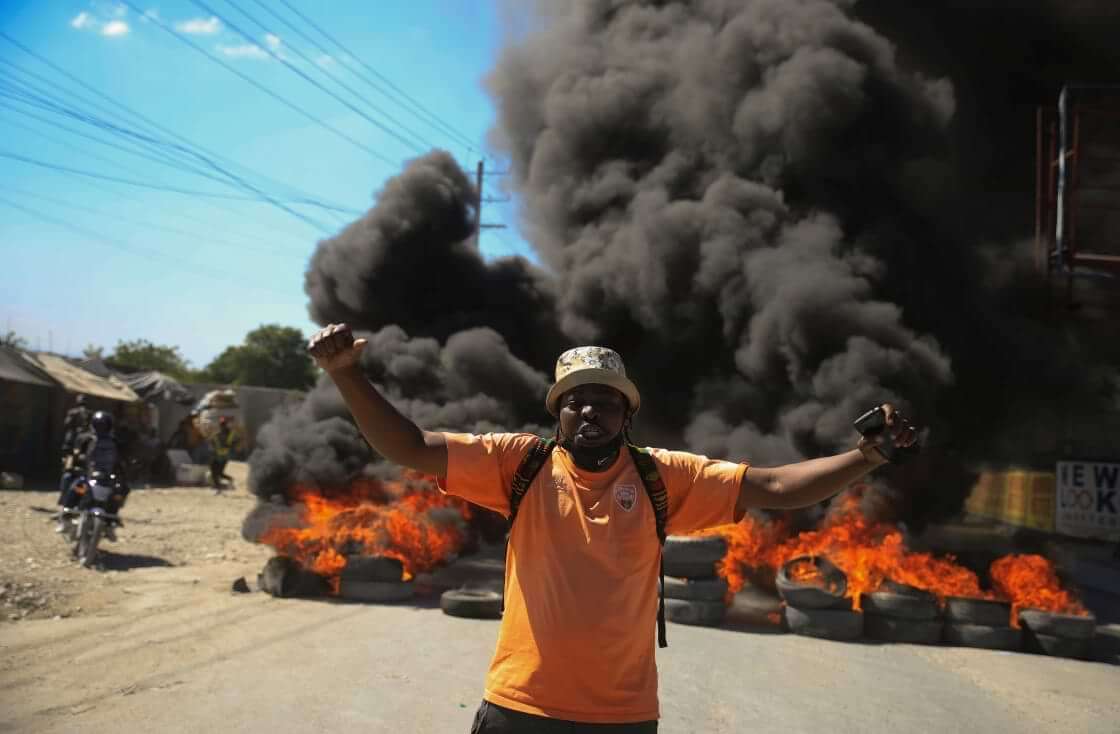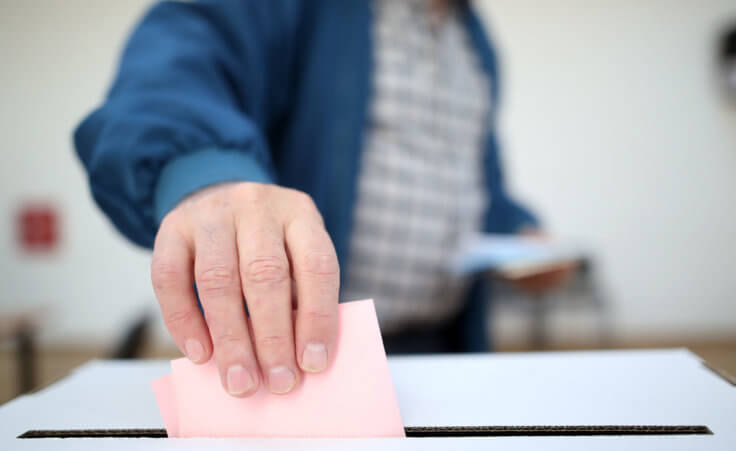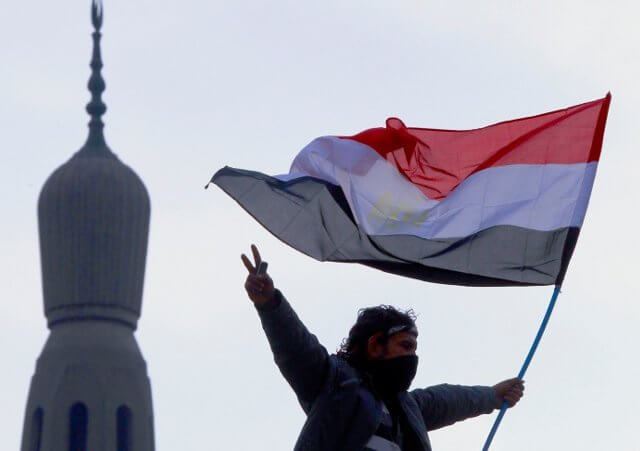
A protester shouts anti-government slogans by a burning barricade set up by members of the police to protest bad police governance in Port-au-Prince, Haiti, Thursday, Jan. 26, 2023. A wave of grisly killings of police officers by gangs has spurred outrage and protests by Haitians. (AP Photo/Odelyn Joseph)
Haiti is the Western Hemisphere’s second-oldest republic. At least for now.
As Andy Olsen writes for Christianity Today, massive influxes of militant gangs now control most of the country’s capital of Port-au-Prince and parts of many other cities as well. Due to this Haitian gang violence, their economy has experienced nearly 50 percent inflation and the nation’s citizens are on the brink of famine.
The acting president, Ariel Henry, took over in 2021 after the country’s previous leader was assassinated but should have passed that mantle on to someone else long ago. Replacing him would require elections, though, and what remains of the nation’s law enforcement is too preoccupied with the gangs to ensure people can vote safely.
The problem does not appear likely to improve anytime soon.
The gangs at the heart of the violence have waiting lists because so many young people want to join while the government “had to open a dedicated office just to process the thousands of police officers applying to flee the country.”
As Guenson Charlot, the president of Emmaus University in Cap-Haïtien, describes, “I have never seen people in the street so fearful and suspicious of other people. That is damaging the very fabric of our resilience.”
So it’s worth looking into when Olsen poignantly asks, “How did the most evangelized realm in all the world become a nation in dismaying anarchy?”
To that end, he details the history of Haiti through the lens of two main eras, and his entire piece is worth taking the time to read, but I’ve summarized salient points below.
Powered by RedCircle
A short history of Haitian missions
Olsen dates the first wave of Haitian missions back to the 1840s.
At this time, Protestant missionaries had begun to take the gospel across the world but largely skipped Haiti. As he describes, “Most of the few missionary efforts gaining traction in the young nation were initiated by Black believers escaping antebellum America or inspired by the prospect of a Black-led republic.”
By this point, Haiti had been an independent republic for roughly four decades but was still struggling to find its footing in many respects. That’s where the missionaries often stepped in.
The Methodists in particular established a strong relationship with the government, hosting schools in their churches and partnering with the Haitian leaders to help the people in their communities.
At a time when, “600 miles north in America, the Civil War came and went and Jim Crow entered adolescence,” white missionaries and Haiti’s black government worked hand in hand to help their people.
As Olsen describes, “The Haitian state saw the missionaries as allies in nation building and entrusted precious resources to their oversight. The missionaries saw the gospel as a gift for both individuals and entire societies, and they entrusted the Haitian state with the future of their programs.”
Brutal atrocities
However, that all changed when the USS Washington sailed into the waters outside Port-au-Prince on July 28, 1915, and 330 Marines disembarked to begin a brutal occupation that would last nearly two decades.
The list of atrocities committed by the Marines is heartbreaking, and the negligence of the American government in enabling it to persist should be a much larger stain on our nation’s history. Ultimately, it was the work of missionaries like L. Ton Evans and S. E. Churchstone Lord that helped draw enough attention to the occupation that the government was forced to eventually withdraw its troops.
The damage had largely been done, however, and the groundwork was laid for the rise of one of the twentieth century’s most brutal dictators.
Papa Doc’s reign of terror—with evangelical complicity
Missionaries began arriving again in earnest following World War II. During this same period, François Duvalier—an American-educated Haitian better known as “Papa Doc”—was elected president. He quickly built a “fearsome paramilitary group to punish dissent” while siphoning “government funds and foreign aid to enrich himself and his supporters.” It is believed that at one point he was “skimming as much as $15 million a year from American aid money.”
In response, the US government cut off Haiti, choosing to funnel resources into the country through missionary organizations instead. And there were plenty to choose from.
One of the first changes Papa Doc made upon coming to power was to start expelling Catholic priests, choosing instead to reach out to American evangelicals for help. Arthur Bonhomme, a Haitian senator and nominal Methodist lay preacher, was the primary means by which he curried evangelical favor.
As Olsen describes, Papa Doc fostered these relationships at the same time his regime “assassinated or executed an estimated 30,000 or more victims around the country.” Duvalier would often supervise or observe torture sessions “through peepholes cut in walls at the Port-au-Prince police headquarters.”
Papa Doc made it clear to all incoming missionaries that their help was welcome and they would be given relatively free reign within the country “so long as they do not interfere in the internal politics of Haiti.” Most abided by those restraints and by the 1970s evangelicals were opening hundreds of schools, clinics, orphanages, and other facilities across the country.
Haitian gang violence today
Charles-Poisset Romain, a Haitian sociologist and theologian, writes that “Haiti during the ’70s was the most active mission field in the Western Hemisphere.” Given that an estimated 85,000 short-term missionaries traveled there each year, “most active” still seems to underestimate the gravity of the evangelical presence in the country.
When Papa Doc died and his son “Baby Doc” took over, the violence subsided to some extent, but the greed and embezzlement continued. By the time the Duvalier family’s reign finally came to an end in 1986, the economy was in shambles and corruption was rampant throughout the government and police.
The efforts of missionaries masked much of the damage, propping up the populace but creating a level of foreign dependency from which the nation still has not recovered—a fact that became abundantly clear when Covid put a stop to the constant stream of missionaries. And while those efforts have since resumed to some extent, the vacuum left by their pause has been filled by gangs and a general unrest that has left the country in a dire condition.
How to help Haiti
I bring this story up today for two reasons.
First, the people of Haiti and those risking their lives to help them need our prayers and support.
Only God gets to say what that support should look like for you, but we need to ask and then commit to obeying the Lord in whatever he calls us to do. And whether his command is to pray, serve in Haiti yourself, or anywhere in between, we must do so under the power and guidance of the Holy Spirit, which leads to the second reason.
As Olsen concludes, “Foreign evangelicals cannot end Haiti’s problems, but we can stop doing our own thing.” He goes on to call for greater care and cooperation between the Haitian people and those endeavoring to serve them in the name of Christ.
Remember, God’s call is not to recreate the American church but his church, and his church can look very different depending on where it resides.
Christians have done a remarkable job serving the people of Haiti for the better part of two centuries. Especially over the last seventy years, though, that service has too often been done for the people instead of with the people. And we should bear that distinction in mind wherever we seek to be the hands and feet of Christ to those around us.












